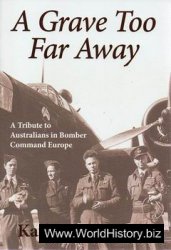BY John B. Nichols and Barrett Tillman
The American public was not in the mood for heroes during the Vietnam War, but there were plenty of them in the military’s ranks. In this excerpt from their book On Yankee Station, John Nichols and Barrett Tillman tell of one such man, Lt. Comdr. Mike Estocin, an A-4 Skyhawk pilot. The supreme tragedy of Viemam was that the lives of so many men like Mike Estocin were squandered without purpose.
Flying escort on Iron Hand sorties gave fighter pilots greater appreciation of the attack community. Perhaps the bravest man I ever knew, and one of the finest aviators, was Lt. Comdr. Mike Estocin of VA-192. We flew together in Air Wing 19 off the Ticonderoga in 1967, and Mike was on a roll. He seemed to wage a personal war
Against SAM batteries, and he wasn’t content merely to suppress them. He wanted to destroy them.
On 20 April 1967, Mike led a three-plane flight against Haiphong, in the face of heavy SAM opposition. Mike called out the missiles, led his flight against three sites, and took out all three. But his A-4E sustained blast damage, and he pulled off to check his airplane. Satisfied he could stay in the air, he returned to the target to launch his last Shrike.
By the time Mike egressed, he was losing fuel at a horrible rate. He estimated that he had five minutes of flight time remaining. Providentially, a KA-3 tanker was close enough for him to plug in, and they flew formation back toward the task force. The Skyhawk was pumping fuel overboard through holes in the wings, as the KA-3 passed far more fuel than Mike was using.
None of us who saw that picture can ever forget it: the little A-4 hooked up to the “Whale,” flying a long straight-in to Tico with Mike radioing instructions to the tanker pilot: “You’re half a ball low, take it up.” Mike Estocin was a precision aviator.
Finally, between two and three miles from the ramp, the tanker unhooked and pulled up. Mike was committed; he had fuel for
One pass at the deek. Then his airplane caught fire.
But it didn’t matter. He made an excellent landing, the fire crews doused the flames, and Mike opened the canopy. He tossed down his helmet to a crewman, alighted from the cockpit, and walked across the deck, not even looking back. Another day, another dollar.
Six days later I flew Mike’s wing during a strike on petroleum facilities in Haiphong. It was the second Alpha of the day, with clear skies and unlimited visibility.
We coasted in ahead of the strike group at
21,000 feet, headed for Site 109 north of the city. As the strike pulled off target and headed for the beach, Mike called, “The site is up!” We turned directly toward the SAM site.
Our radar controller, noting the strike was outbound, queried, “Are you feet wet yet?” Mike answered, “Negative,” as we continued northward, my F-8 stepped up in a right-hand SAM box.
Moments later Red Crown came back: “The strike is all feet wet. What is your position? Are you feet wet?” There was apprehension in his voice.
I glanced over and saw Mike leaning forward, obviously looking for the SAM he
Knew would come. Then we both saw the liftoff, straight ahead about eight miles. Mike called it, and I acknowledged. The SA-2 arced up, the booster separated, and the missile continued head-on. I waited for Mike’s turn to offset the SAM’s heading, but we maintained course.
In retrospect, it’s apparent what happened. Mike, the dedicated Iron Hand, was closing the range for a high-percentage shot at the site. He ignored the SAM, concentrating on firing a Shrike.
He waited too long. The SAM exploded off the A-4’s left nose, rolling the Skyhawk almost inverted to starboard. In a steepdiving, right-hand turn, Mike’s airplane shed debris while trailing heavy flames from the belly.
Following, I was relieved to see the Sky-hawk begin a pullout, coming level at about
2,000 feet. I was closing rapidly, and to prevent an overshoot I extended my speed brakes and finally had to lower my wheels and raise the variable-incidence wing. We were making about 160 knots, still decelerating.
Fire was visible from Mike’s wingroot as I flew close aboard to starboard. I heard the high warble of another SAM closing in. My F-8 was rocked by the missile’s passing and I felt the explosion behind me. It was that
Close. But I was more, concerned with Mike.
Now very close to his right wing, I could see Mike leaning well forward in his seat, but he didn’t turn to look at me. There was no response to my calls, so I went to guard frequency and summoned the ResCAP. We were directly over Haiphong, headed for the water, so there seemed a chance Mike could make it.
I crossed to port, and it was then I knew my hopes were baseless. The left nose and cockpit area were heavily damaged. The 350-pound SAM warhead had done its job. Mike’s airplane had many large holes and the port intake was smashed. For lack of anything else to do, I crossed back to starboard. We were about three miles from the water, descending to 1,000 feet.
Then, ever so slowly, the Skyhawk began a left-hand roll. I followed to about ninety degrees, then realized Mike wasn’t going to recover. I returned to level flight as the A-4 went inverted and seemed to hang in midair for a few seconds. Suddenly the centerline tank blew off and both Shrikes fired. The circuits were apparently burned through, punching off the drop tank and launching the missiles.
Then the nose came through and the Sky-hawk impacted from inverted. I flew around
The crash site at 500 feet, looking for a parachute. There was none. Flak increased, and that was no place to be low and slow. The ResCAP, still inbound, asked if there was a chance. I said negative, and the CAP remained offshore as I came out.
Mike Estocin received a posthumous Medal of Honor, and more recently, a ship was named for him. His aggressiveness and airmanship were unquestioned. He got the job done, but he wanted more. We had kept the SAMs down while the strike went in and made a safe getaway. As soon as the bombers cleared the beach, our job was over.
Whether Mike chose to ignore the SAM launched at us or whether he misjudged its closure is open to conjecture. We did not turn even slightly so that the closure rate and proximity could be discerned better. Perhaps the SAM fooled him because it came from straight ahead.
In any case, Mike wasn’t satisfied with merely suppressing the missiles. He wanted to shoot those people, just as he’d done six days before. But that was an inherent risk in playing the electronic game of tag over North Vietnam. The desire to win could overshadow one’s sense of preservation, and it cost us some of our best men.
It’s a lesson we will profit by studying.




 World History
World History









